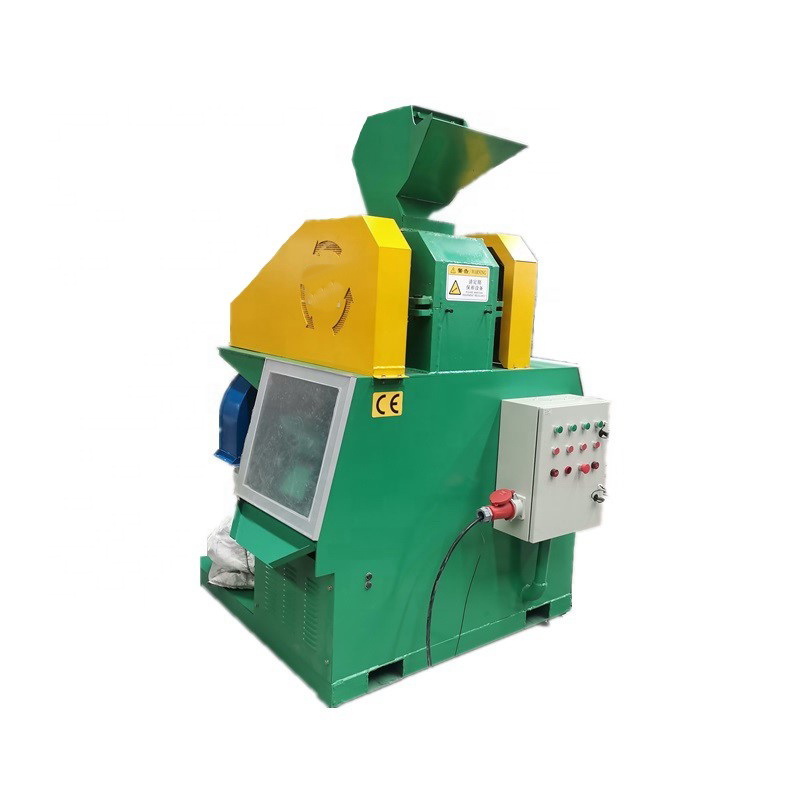

Nov. . 16, 2024 17:34 Back to list
How Metals are Sorted in Recycling Plants
Recycling plays a crucial role in conserving resources, reducing waste, and minimizing environmental impact. Among various recyclable materials, metals are particularly valued due to their recyclability and the energy savings associated with their reuse. However, the recycling process is not as simple as throwing metals into a bin; it involves an intricate system of sorting and processing. This article explores the methods utilized by recycling plants to sort metals effectively.
The Importance of Metal Recycling
The recycling of metals significantly reduces the demand for virgin materials, which in turn lowers energy consumption and greenhouse gas emissions. For instance, recycling aluminum saves up to 95% of the energy required to produce new aluminum from ore. Thus, understanding and improving the processes behind metal sorting is essential for enhancing recycling rates and efficiency.
Initial Collection and Pre-Sorting
The recycling process begins at the collection stage when metal items are gathered from various sources such as residential areas, businesses, and industrial waste. Once collected, metals are transported to recycling plants, where they undergo initial sorting. This pre-sorting phase is crucial as it helps in categorizing metals by type and removing non-metallic materials, such as plastics or wood, which can contaminate the metal recycling stream.
In this phase, workers often rely on manual sorting to identify different types of metals. They separate ferrous metals (those that contain iron) from non-ferrous metals (metals such as aluminum, copper, and brass). Manual sorting is effective, but many recycling plants are increasingly integrating technology to enhance this process.
Mechanical Sorting Techniques
Once initial manual sorting is completed, the next step involves mechanical sorting techniques that use various technologies to streamline and improve the accuracy of the sorting process. Common mechanical methods include

1. Magnetic Separation This method is particularly effective for separating ferrous metals from non-ferrous metals. In this process, a conveyor system transports the collected materials past a powerful magnet, which attracts and pulls ferrous metals away, allowing non-ferrous materials to continue through the sorting system.
2. Eddy Current Separation This technique is used to separate non-ferrous metals from non-metallic materials. Eddy current separators generate a magnetic field that induces currents in conductive metals. These currents create a repelling force, effectively pushing non-ferrous metals away from the waste stream while non-metals fall back, facilitating the separation process.
3. Optical Sorting Advancements in technology have introduced optical sorting methods that utilize cameras and sensors to identify different types of metals based on their colors and surface characteristics. This method is particularly useful for sorting non-ferrous metals that may be similar in appearance but differ in composition.
4. Density Separation This process relies on the differences in density between materials. For instance, using water or air in a controlled environment, lighter materials can be separated from heavier metals. This technique is often employed in conjunction with other methods for more effective sorting.
Final Processing and Baling
After the metals have been sorted and separated, they undergo final processing, which often includes shredding, melting, and refining. Shredding reduces the size of metal chunks, making it easier to handle. The melted metals are typically poured into molds to form ingots, which can then be shipped to manufacturers to create new products.
To optimize storage and transport efficiency, sorted metals are often compressed into bales. This not only saves space but also helps in maintaining the quality of the materials during transportation to smelting facilities.
Conclusion
The sorting of metals in recycling plants is an intricate, multifaceted process that combines human expertise with advanced technology. From initial collection and manual sorting to the use of mechanical methods like magnetic separation and optical sorting, the industry continually seeks ways to enhance efficiency. As demand for recycled metals grows, so will the importance of improving these sorting techniques, ultimately leading to reduced environmental impacts and a more sustainable future. By embracing innovation and efficiency, recycling plants play a pivotal role in conserving resources and promoting a circular economy.
Latest news
Troubleshooting Common Eddy Separator Problems
NewsJul.04,2025
The Role of Metal Recycling Plants in Circular Economy
NewsJul.04,2025
The Impact of Recycling Line Pickers on Waste Management Costs
NewsJul.04,2025
Safety Features Every Metal Shredder Should Have
NewsJul.04,2025
How Industrial Shredders Improve Waste Management Systems
NewsJul.04,2025
How Cable Granulators Contribute to Sustainable Recycling
NewsJul.04,2025